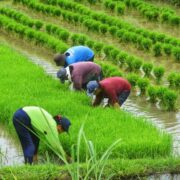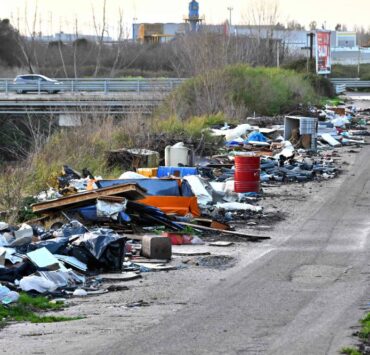Strengthen support for seaweeds

It is imperative that we strengthen the support for our seaweeds industry. This is because it is strategic for our economic growth, provides a high return on investment (ROI) and gives livelihood to one of our country’s most disadvantaged sectors.
Our fisheries sector is composed of two segments: (1) fish capture, divided into marine and inland, and (2) aquaculture.
Between the two, aquaculture has much more potential. Seaweeds make up 60 percent to 70 percent of total aquaculture production.
The global seaweed industry is approximately 12 million tons in volume (worth $6 billion) annually. Of this industry, 85 percent consists of food products. The Philippines was the No. 1 seaweed producer in the world, but we lost that position to Indonesia in 2008. Today, we are behind Indonesia and China. With government support, we must now regain this leadership position.
Underutilization
According to the Department of Agriculture’s (DA) Seaweed Roadmap 2022-2026, the potential area for seaweed farming is 700,000 hectares, of which only 8 percent is utilized. This sector is characterized by family enterprises, which are situated in our most economically depressed areas.
The Department of Trade and Industry has registered 200,000 fisherfolk households, or 1 million individuals, who are dependent on seaweed cultivation.
The Philippine Rural Development Plan states: “Over and above the economic value of seaweeds, the benefits to the environment cannot be overlooked. It provides food, habitat and breeding grounds for many marine species and organisms. It also promotes ecological stability and sustained productivity.”
The global demand for seaweeds and their derivatives is rapidly expanding. This is because of its increased usage in other applications such as food gels, processed meats, fertilizers, cosmetics, pharmaceuticals and biotechnology.
Its general product forms are raw fresh and dried seaweeds, seaweed-enriched food products, carrageenan, fertilizers, growth promoters and feeds.
The key industry players are the import suppliers, producers/farmers, traders/consolidators and processors/exporters. Each of these players must be included in a unified team that will propel seaweed growth.
The DA is currently doing this. They have recently created commodity boards that will report monthly to DA Secretary Francisco Tiu Laurel Jr. They will report the five most important issues requiring action that either block or hasten the commodity’s growth.
In particular, the seaweed commodity board must be given high priority because it brings urgently needed livelihood to alleviate poverty in our most depressed areas. What makes this more compelling is seaweed’s high profitability. Data from the DA shows an actual high ROI for small seaweed producers/farmers ranging from 97 percent to 103 percent.
Interventions
To achieve the seaweed growth goal, stakeholders have recommended five key interventions: (1) provide easier access to financial resources; (2) improve marketing linkages of seaweed farmers; (3) capacitate seaweed farmers and farmer organizations; (4) promote community-based value-added products and fresh seaweeds; and (5) address threats affecting the integrity and superiority of Philippine seaweed/carrageenan.
Last Jan. 29, in a meeting of the Philippine Council of Agriculture and Fisheries Committee on International Trade, the president of the Seaweed Industry Council of the Philippines, Alfredo Pedrosa III, commended the DA for its significant intervention. After having identified a key problem in seaweed propagation, the DA, on its own initiative, discovered and funded a bioreactor to solve this problem, among many other actions.
Pedrosa wrote: “This new government’s proactive approach is definitely a catalyst of change for seaweed industry advancement.” This proactive orientation must continue in seaweed and other sectors, as well as get the full support of the private sector.
The author is Agriwatch chair, former secretary of presidential flagship programs and projects, and former undersecretary of the Department of Agriculture and the Department of Trade and Industry. Contact is agriwatch_phil@yahoo.com.





















